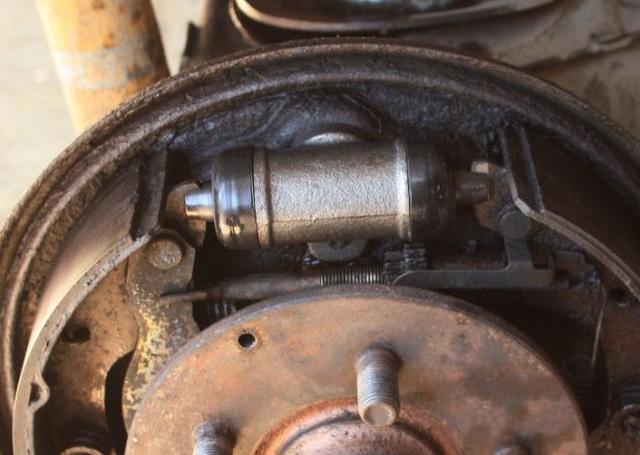Wheel cylinders are a critical component of drum brakes, applying the necessary force to the brake shoes to stop your vehicle. If you have a car with drum brakes and notice one or more of the following symptoms, it could be a problem with a wheel cylinder:
- Soft or spongy brake pedal
- The brake pedal goes to the floor
- The car pulls to one side or stops unevenly
- Signs of leaks on the backside of the wheel or brake assembly

These symptoms could also result from an issue with your master cylinder or brake lines. This guide shows you what to check if your brake pedal goes to the floor or have other symptoms. But if you do have issues, it’s important to get your brakes checked right away.
How Wheel Cylinders Work

Wheel cylinders are round, cylinder-shaped parts located at the top of the drum brake assembly. They use hydraulic principles to push a set of pistons against the brake shoes inside the brake drum. This force generates friction against the brake drum, slowing or stopping your vehicle. Over time, the rubber seals and other parts of the wheel cylinders deteriorate due to the heat and dust inside the brake drum. Eventually, they will start to leak hydraulic fluid and require replacement.
How to Repair or Replace Wheel Cylinders

Servicing your wheel cylinders involves many of the same steps as changing your drum brakes, but first, you need to purchase the correct parts. BuyBrakes.com offers two types of choices for wheel cylinders:
- The easiest option is to replace the entire wheel cylinder, which you can purchase using this link. By purchasing the complete wheel cylinder, you don’t have to mess with cleaning and disassembling your current wheel cylinders.
- The other option is to purchase a wheel cylinder rebuild kit. This option is the cheaper route but can be more complicated and more time-consuming.
Once you have your wheel cylinders, follow the same steps for changing your drum brakes. Once you’ve removed the springs and the brake shoes, you’ll have access to remove the wheel cylinders.
- Start by removing the brake line from the back of the wheel cylinder. Use the correct size wrench and avoid twisting the brake line as you remove it. You will want to have a pan or bucket handy to catch the brake fluid that drains out of the brake line.
- Remove the wheel cylinder bolts on the back of the brake backing plate. Usually, two bolts secure the wheel cylinder. Once the bolts are removed, you can remove the wheel cylinder.
Follow the above steps in reverse order to install the new or rebuilt wheel cylinders. After connecting the brake lines, you’ll need to bleed the brakes to remove any air from the brake lines and wheel cylinders.



